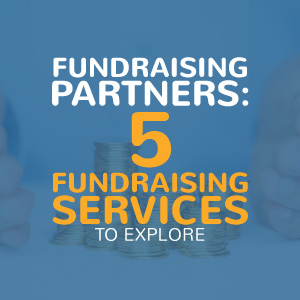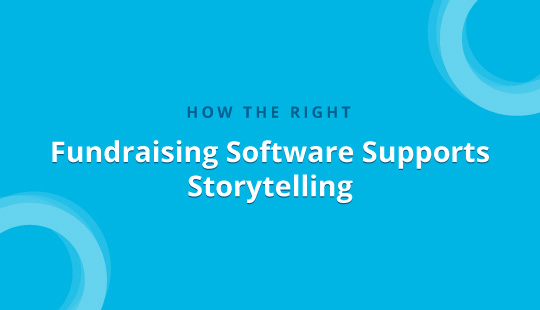This week I’m pleased to present a guest post on how to create digital communities on social media by Maria Clark, Executive Vice President, Partnerships and Chief Evangelist, GoodUnited
With individuals more separated than ever before, and virtual and hybrid events sticking around for the foreseeable future, there are few opportunities for your supporters to connect with one another and bond over their shared interest in your cause. But, during these times of change, strong community ties will be essential for retaining donors.
In 2021 and going forward, it’s especially crucial to use social media as not just a broadcast tool, but as a community-builder as well. In this guide, we’re going to walk through the process of creating a digital community on social media using a strategy that we’ve found effective at GoodUnited. This strategy includes creating Facebook Challenges that participants can use to both fundraise and experience community.

Facebook Challenges are time-bound, peer-to-peer fundraisers during which participants complete a task while raising funds using a personal Facebook fundraiser. During the Challenge, all participants are added to a Facebook group through which they connect with other participants.
These Challenges are effective because they have a low barrier to entry, are fun for participants to engage in, and have a built-in community aspect. We’ll walk through the following two steps for cultivating digital communities using Facebook Challenges:
- Step 1: Plan your Facebook Challenge.
- Choose a Challenge activity.
- Create a corresponding Facebook group.
- Use a Facebook Ads campaign to spread the word.
- Step 2: Cultivate community in your Challenge.
According to fundraising statistics compiled by 360MatchPro, “Of the donors who are inspired to give by social media outreach, 56% of them say Facebook has the biggest impact on them.” That means there is a huge opportunity for your nonprofit to impact donors in a positive way on Facebook!
Let’s dive into creating a strategy for creating digital communities to do just that.
Step 1: Plan Your Facebook Challenge
Before you can cultivate a community on social media, you need to lay the digital foundation for where that community will “meet.” We’ve discussed how Facebook Challenges— time-bound peer-to-peer fundraising challenges— are the ideal arenas for these communities to grow. So, let’s walk through the steps of organizing a Facebook Challenge.
Choose a Challenge Activity
During a Facebook Challenge, participants complete an activity for a set duration of time. Therefore, there are two aspects for you to sort out. First, the duration of your Challenge, such as:
- Week
- Month
- Multiple weeks/months
Or longer! Generally, we’d recommend a quick duration to ensure participants are engaged and actively participating from start to finish. From there, you’ll want to choose an activity for participants to complete during the Challenge. Here are a few categories to consider:
- Physical Fitness: This includes steps walked, miles ran, or even weight training activities completed. One of the most popular examples is asking participants to walk 10K steps per day for a set time period.
- Intellectual: This could include challenging participants to read a certain number of books or watch a number of movies. One bonus of this is that participants can discuss their “reviews” of the various materials.
- Service-Oriented: Challenge your participants to volunteer a set number of hours! These hours could be served with your nonprofit or other organizations.
- Routine-Based: Whether “Meatless Mondays” or zero-spend challenges, task your participants to switch up their daily routines and report on their efforts.
- Comedic: There are a variety of comedic challenges, such as tasking participants with not shaving their faces or cutting their hair for a long time period. Or, you could challenge them to wear a funny costume in public.
You’ll want to tailor your Challenge task to your audience— so, for example, if you have a very active audience base, a physical fitness task such as running multiple miles per day would work well. Check out this GoodUnited guide to peer-to-peer fundraising ideas to kickstart your brainstorming.
Create a Corresponding Facebook Group
During a Facebook Challenge, participants are added to a corresponding Facebook group in which they can connect with other participants, share their task and fundraising efforts, and connect with each other.
After you’ve chosen your task and duration, you’ll need to set up that Facebook group so it’s ready once participants begin joining the Challenge. Here are a few tips to keep in mind when creating your group:
- Create the group using your nonprofit’s Facebook account. This allows you to maintain the administrator status of the group and monitor all information shared to it.
- Choose engaging, on-brand images and graphics for the group. You’ll be able to designate the cover photo and profile image of the group. Choose images that participants will easily recognize as being associated with your nonprofit.
- Write a clear description of the Challenge. Write a few sentences about the task, duration, and what the funds raised will impact in the group’s description. The goal is to make the purpose of the group clear for users who join it.
- Consider sharing an explainer document as one of your first posts. Explain the parameters of the Challenge task and steps that participants can follow to create their accompanying Facebook fundraisers. For some of your participants, this could be their first experience with the peer-to-peer fundraising method!
Once you’ve outlined your Challenge parameters and created a Facebook group, you’re ready to begin inviting users to participate.
Use a Facebook Ads Campaign to Spread the Word
It’s impossible to hold a successful virtual fundraising experience if no supporters “show up” to participate. Luckily, there are advertising tools built directly into Facebook, so prospects can discover your Challenge and sign up without ever leaving the platform.
Create a paid Facebook Ads campaign to share the opportunity with your nonprofit’s social supporters. Here are the steps to create a campaign:
- Create a campaign within the Facebook Ads Manager.
- Define the Reach Objective— also known as the category that your Ad Campaign falls under.
- Name your campaign.
- Set your audience, either by location or advanced targeting elements.
- Choose your placements, or where on the page the ads will appear.
- Define your budget for the campaign and the schedule on which you want ads to appear.
- Set the frequency at which you’d like your ads to be shown to each individual user.
- Add creative elements, including images, ad copy, and call-to-action text and links.
From there, you click “Confirm” to begin your campaign.
Don’t limit the scope of your campaign to only include individuals who have donated to your nonprofit in the past. Include individuals who follow your nonprofit’s page, start fundraisers, like or share your posts, or are generally in your nonprofit’s orbit.
We’ve found that up to 90% of the participants in a Facebook Challenge are new to either the cause or the nonprofit itself, so there is a good chance individuals who don’t yet support your nonprofit will be interested in doing so with this fundraiser!
Step 2: Cultivate Community in Your Challenge
Once you’ve set the foundation for your Facebook Challenge, the fun begins. After encountering your targeted ads, participants will join the corresponding Facebook group and create their personal fundraisers alongside it.
Once users join the group, you can do any of the following within that group to enhance your digital community:
- Host live-streamed events. For example, if you’re hosting a physical challenge, you could live-stream your nonprofit’s staff members completing the task on the first day of the event.
- Share discussion prompts. To keep supporters engaged during the fundraiser, share questions, facts, and other encouragement to get participants to converse with one another in the comments.
- Comment on posts. When users post that they’ve completed their Challenge task for the day, or that they’ve met their fundraising goal, you can respond with encouragement and motivation.
- Share fundraising and activity tips. Periodically throughout the fundraiser, you can share tips to help participants reach their fundraising and activity goals. This could be physical fitness training tips or even reminders to share their individual fundraisers.
Because you’re the administrator of the group, you’ll be able to monitor it for the duration of your virtual peer-to-peer campaign. Set community guidelines and remove any posts that are off-brand, unkind, or generally not in the spirit of your fundraising community.
Wrapping Up: Continue Engaging with Supporters for Long-Term Support
Your relationship-building efforts don’t need to end once your time-bound fundraising Challenge does.
Consider taking this engagement a step further with one-on-one conversational messaging. Simply make a post within your digital community inviting participants to connect with your nonprofit via Facebook Messenger.
Within Messenger, you can have one-on-one conversations with participants throughout the year, telling the story of your nonprofit throughout the seasons. You can ask questions, collect information about those supporters, and continue stewarding them for long-term support.
All things considered, Facebook Challenges are one of the most straightforward ways to incorporate social media-based digital communities into your fundraising strategy. And, if you’re worried about executing these strategies efficiently, you can always partner with a social fundraising solutions provider to scale up your efforts as your social audience grows. Good luck!
About Our Guest Writer
 Maria Clark Executive Vice President, Partnerships and Chief Evangelist, GoodUnited
Maria Clark Executive Vice President, Partnerships and Chief Evangelist, GoodUnited
Maria Clark is a nonprofit executive and technology evangelist with 30+ years of industry experience. Today she serves as Executive Vice President of Partnerships and Chief Evangelist for GoodUnited, the social fundraising solution. Maria is a champion of the new and has fearlessly led change management efforts throughout her career.
Previously, Maria spent 33 years at the American Cancer Society, a top #20 US nonprofit and the leading cancer research nonprofit with an annual $800+M budget, in roles spanning all aspects of nonprofit communication, operations and fundraising. Most recently, as Senior Vice President for Peer to Peer Development, Maria led strategy development, planning and implementation for name brand ACS events like Relay for Life, Making Strides Against Breast Cancer, a robust gala and golf portfolio and the Raise Your Way DIY platform, as well as championing new digital strategies that support community fundraising.
Maria lives with her husband Derek in Dallas, Texas, where she has a deep history with the nonprofit community. She serves on the Board of Directors for the Notre Dame School, a special needs Kindergarten through post high school in Dallas, and remains active in the Leadership Dallas Alumni Association. Maria is mom to two adult daughters, Devin and Corrie and her fur baby, Ozzy.






